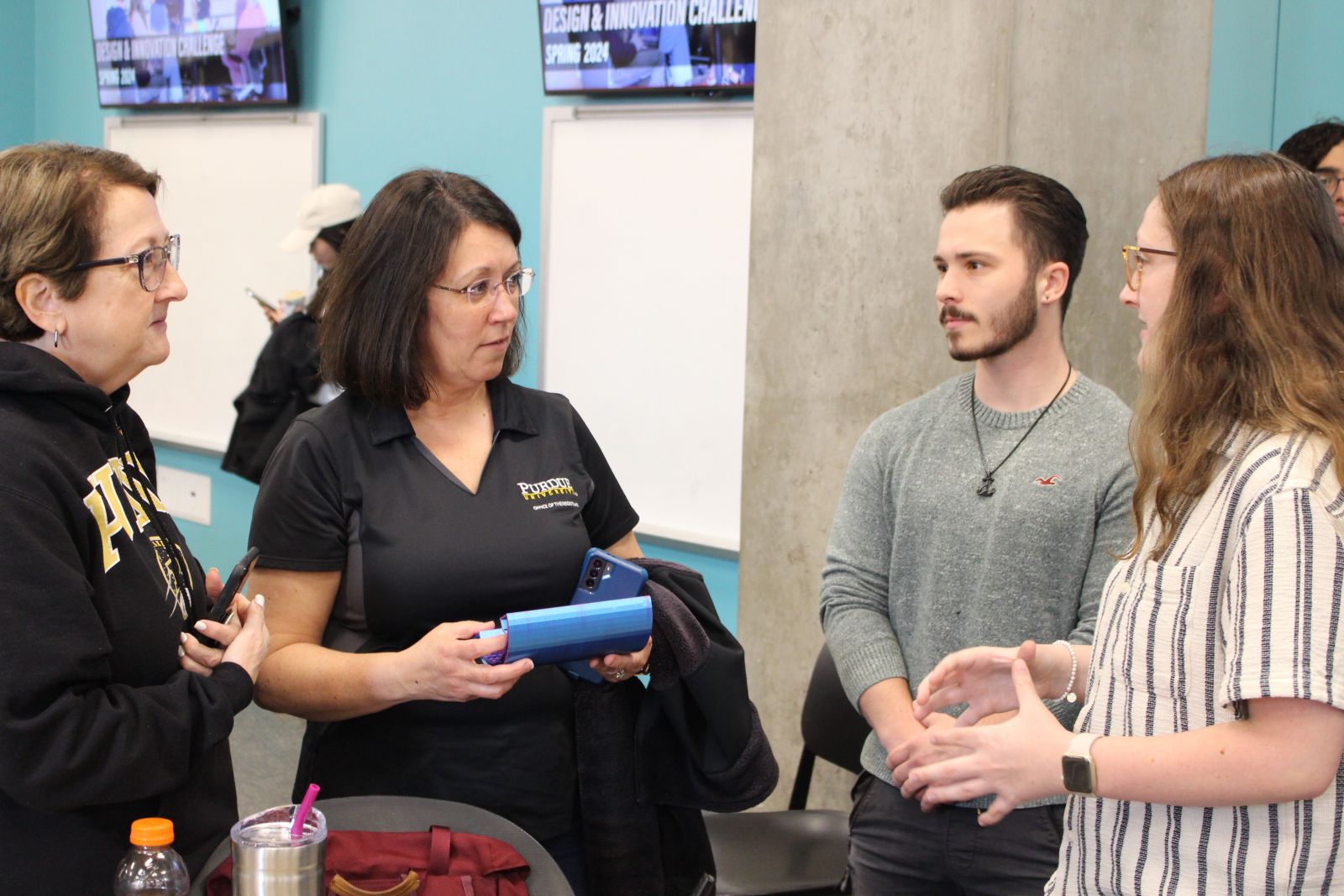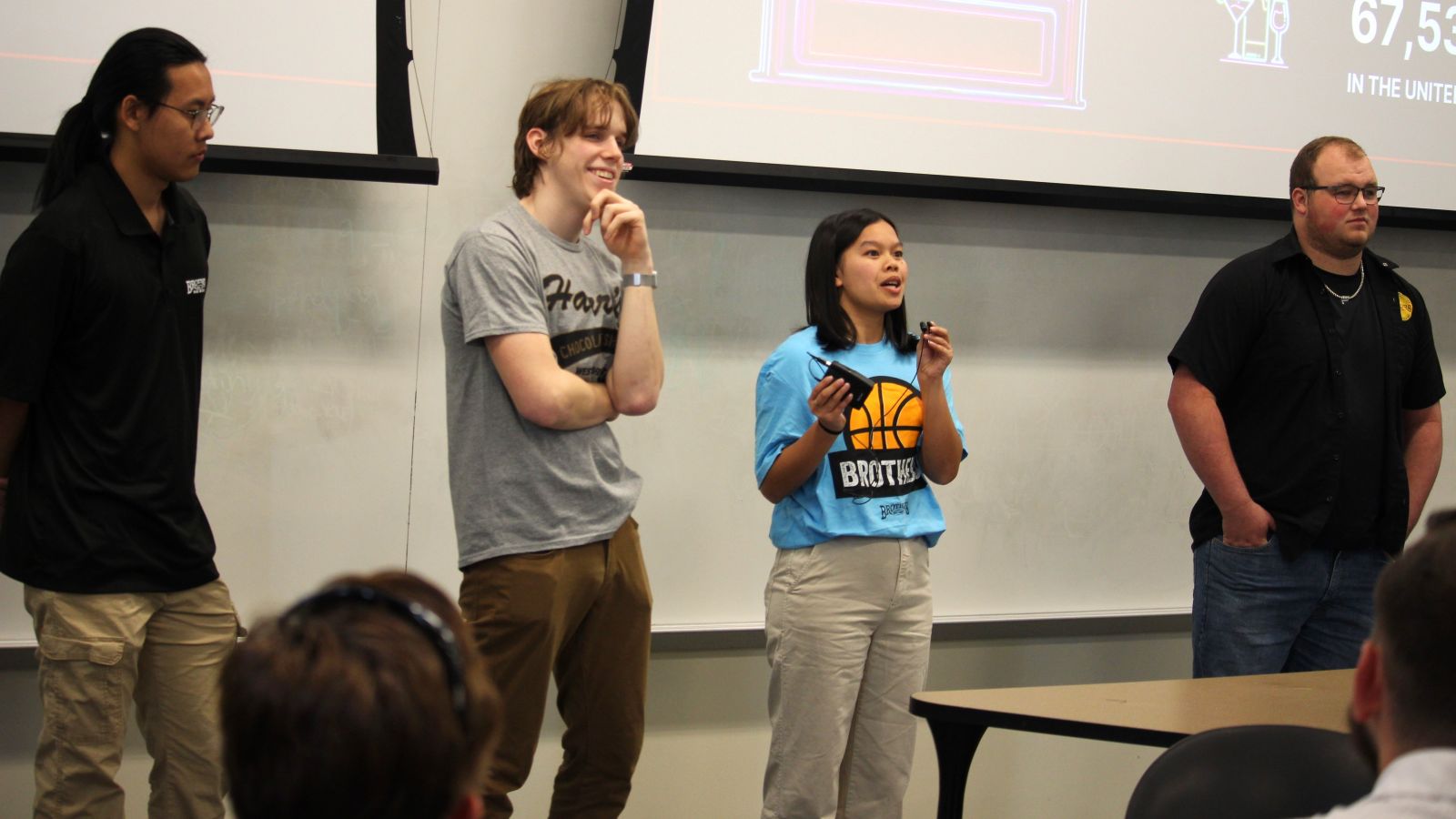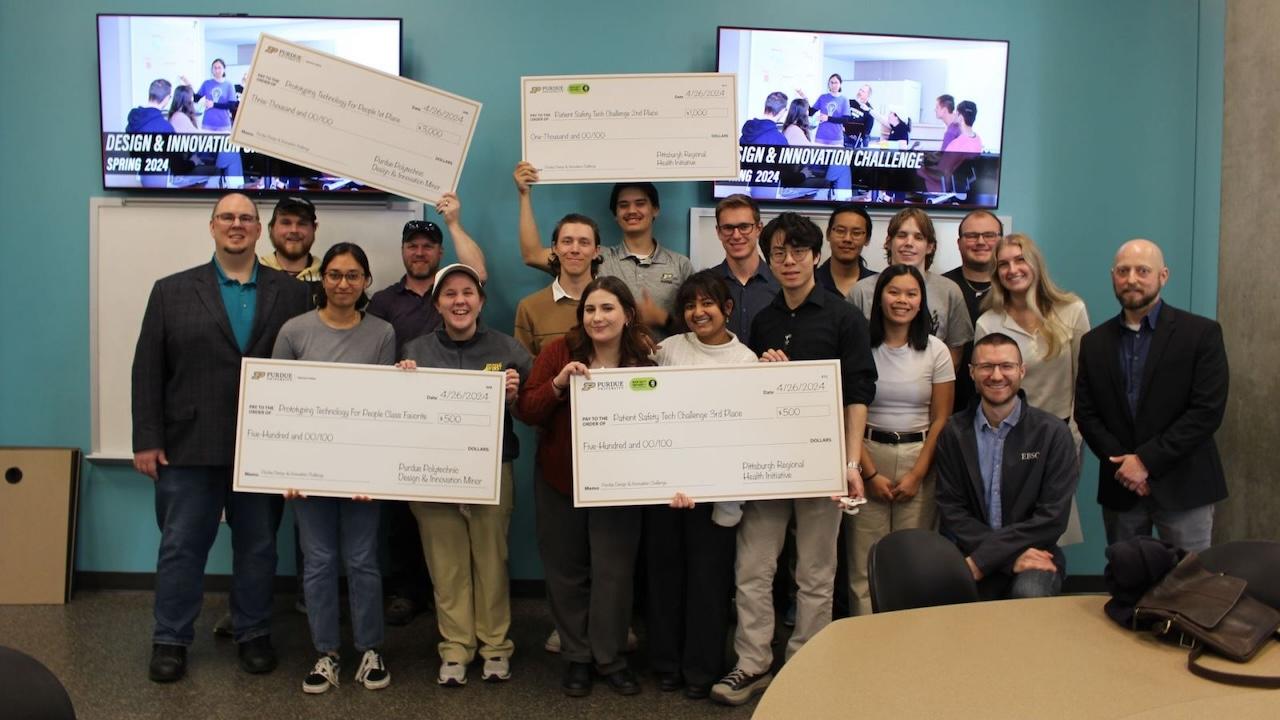On April 26, over 50 students competed in the Design and Innovation Challenge, the culminating event of Purdue Polytechnic’s academic minor and learning community of the same name. Hosted in the Wilmeth Active Learning Center and ran in tandem with the College of Liberal Arts and Daniels School of Business, Design and Innovation students showcased their products designed to solve problems with novel technology.
The Design and Innovation Challenge functions as a reward for student effort, and as a useful indicator for how business-viable their ideas really are.
The Design and Innovation minor has recently expanded with the partnership of Professor Sohn and the Department of Art and Design at Purdue to include a new category of inventions that fall under “Patient Safety Technology.” This category is the result of a sponsorship with the Pittsburgh Regional Health Initiative (PRHI).
PRHI’s stated goal is to partner with organizations capable of using technology to improve medical devices used for both inpatient and outpatient care. The hope for these new technological interventions is to reduce “medical errors,” incurred when a treatment method is too complicated or error-prone, impairing a patient’s health further through malfunction or causing undesired effects.
In total, $18,000 were distributed among the various winners of the Challenge—up from $15,000 last spring due to PRHI’s contributions toward the new award category. These financial incentives are intended as a kind of seed capital, affording winning teams the opportunity to license their inventions as commercial products.

Patient Safety Technology awards (Sponsored by PRHI)
First Place ($2,500): Pillendar
- Jenny Xiangqi Tang (Industrial Design)
- Golnaz Safari (Visual Communication Design)
- Hugo Li (UX Design)
Second Place ($1,000): Scout
- Evan Charles Kremer Reynon (Industrial Design)
- Ambika Chauhan (Industrial Design)
- Alan J. Yan (Industrial Design)
Third Place ($500) Nebu
- Austin Perkins (Industrial Design)
- Lauren West (Industrial Design)
TECH 12000
This course, billed as “Design Thinking in Technology,” prepares students with the foundational skill set needed to conceptualize their own inventions. Course curriculum indicates that students must “demonstrate the ability to recognize opportunity and to take initiative in developing solutions, applying the principles of human centered design.”
First Place ($5,000) and Crowd Favorite ($500): Fly Ash Irrigation
- Jordon Lazaro (Polytechnic)
- Jacob Rocca (Polytechnic)
- Olivia LaDage (Polytechnic)
- Abe Farmer (Polytechnic)
- Easton Heiser (Polytechnic)
Second Place ($3,000): User-Friendly Terms and Conditions
- Madeline Stader (Polytechnic)
- Katie O’Daniel (Exploratory)
- Zehzhou Zhang, (Polytechnic)
- Owen Wang, (Polytechnic)

TECH 22000
Called “Designing Technology for People,” TECH 22000 is a Purdue Polytechnic collaboration with the Department of Anthropology in Purdue’s College of Liberal Arts that “brings together perspectives from technology and anthropology to address this by exploring ethnographic studies of people and technology interactions.” This allows for the students to reach the next step in advancing product designs, as they are meant to practice “problem scoping skills … to identify and define problems and begin to generate appropriate design solutions.”
First Place ($1,000): Neurodivergent People
- Pammie Lavery (Anthropology, Women and Gender Studies)
- Elliot Martin (Computer and Information Technology)
- Glo Rudolph (Studio Arts and Technology)
- Jesse Stolberg (Computer Science)
Second Place ($500): Art Lovers
- Maria Chacon (Psychological Science)
- Madison Loyd (UX Design)
- TJ Murphy (Accounting)
- Jacob Milligan (Construction Management)
- Marina Perez (Organizational Leadership)
- Andrew Peterson (Industrial Design)
Third Place ($300): Gamers
- Justin Ake (Organizational Leadership)
- Spencer Beane (Engineering – First Year)
- Kat Moore (Anthropology Linguistics)
- Nick Rowland (Mechanical Engineering)
Fourth Place ($200): People Who Dislike Long Lines
- Jack Bolster, (Industrial Design)
- Azaria Dunston, (UX Design)
- Emma Miller (Organizational Leadership)
- Drew Klopfenstein (Industrial Design)
- Abigail Shook (Organizational Leadership)
TECH 34000
This final course in the Design and Innovation minor is called “Prototyping Technology for People,” a Daniels School of Business collaborative (their course number is MGMT 39100) that calls for students to create “iterative prototypes [of products providing] innovative solutions.” The students seek to solve industry-relevant problems of their own choosing by creating products that are prototyped and tested throughout the semester.
First Place ($3,000): Hero
- Alexander Searles (Mechanical Engineering Technology)
- Adam Gillette (Theater)
Class Favorite ($500): Athlete Alert
- Elizabeth Knea (Engineering Tech Teacher Education)
- Alekhya Ankaraju (Agricultural Communication)
- Drew Klopfenstein (Industrial Design)
About the Design and Innovation Minor
The Design and Innovation Minor is 15 credits, with a core sequence of three courses: TECH 12000 (Design Thinking in Technology), TECH 22000 (Designing Technology for People) and TECH 34000 (Prototyping Technology for People). TECH 22000 is offered in the spring semester and is the next step for students pursuing the minor after TECH 12000. More information can be found online.
Additional Information
- Design and Innovation minor
- Design and Innovation Challenge showcases creative problem-solving across student disciplines (Purdue Polytechnic newsroom)



